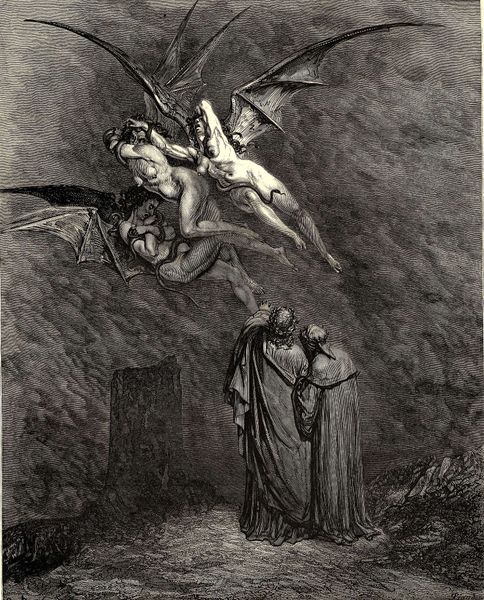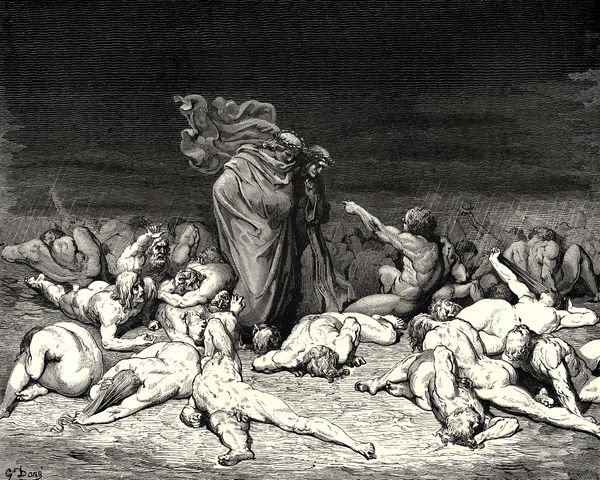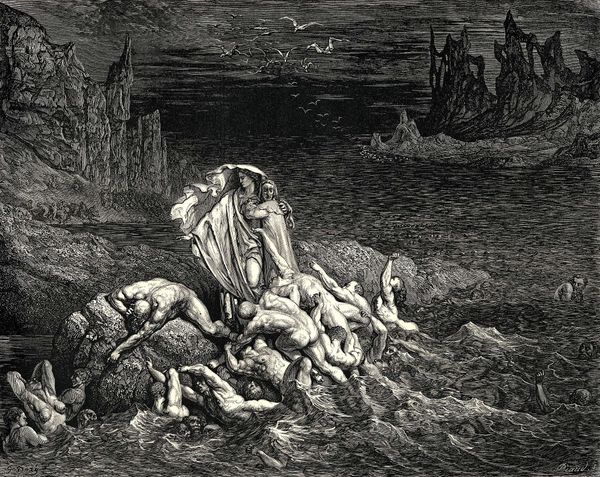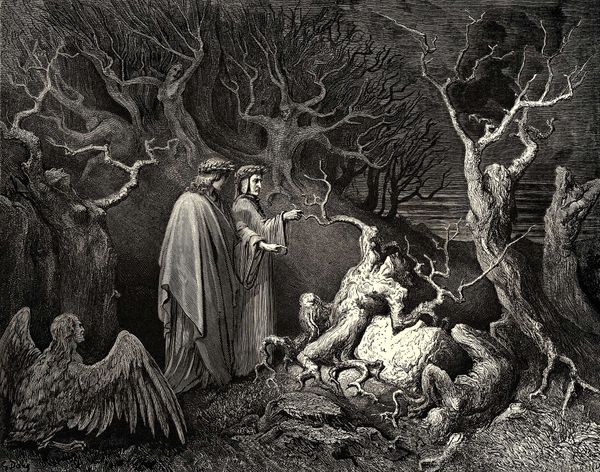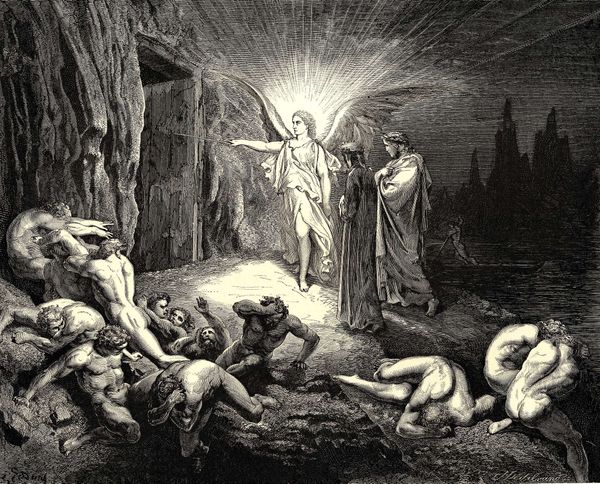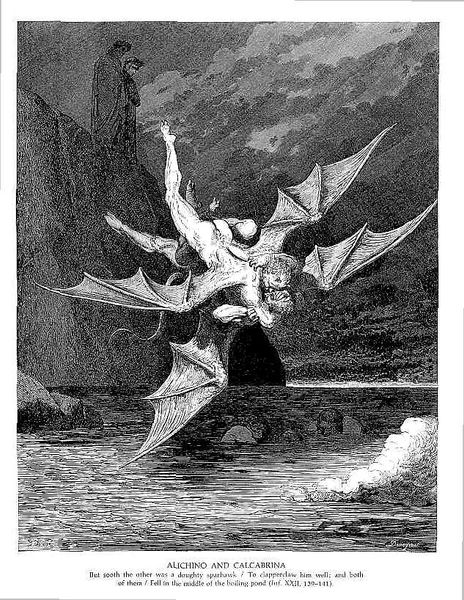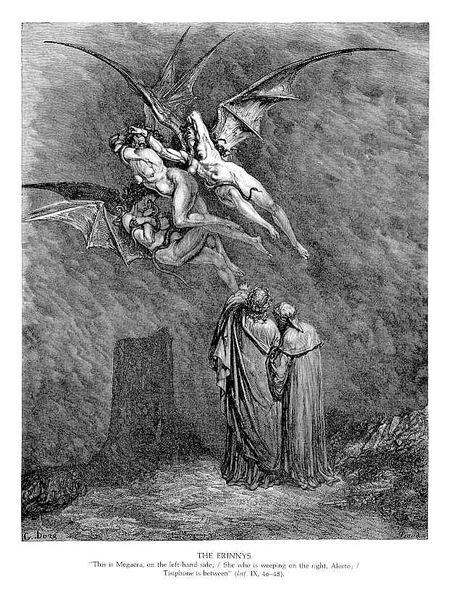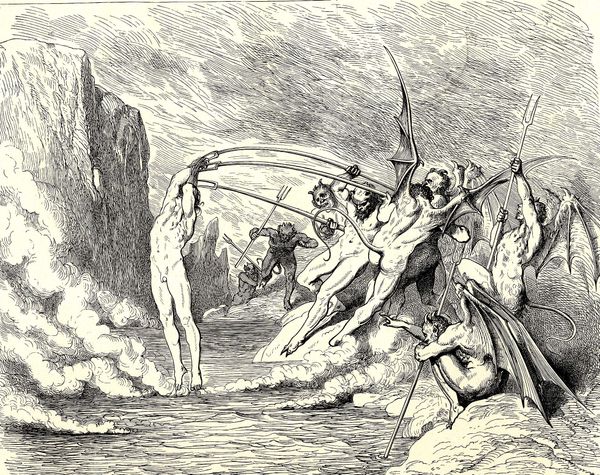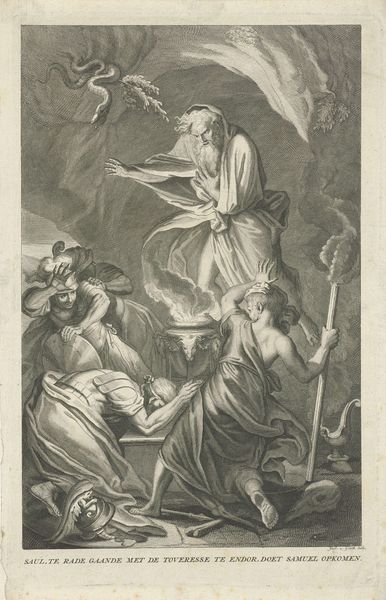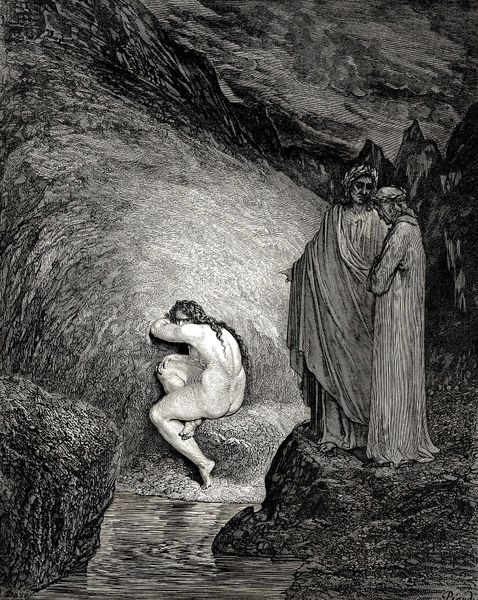
engraving
#
imaginative character sketch
#
fantasy concept art
#
allegory
#
fantasy-art
#
figuration
#
romanticism
#
surrealism
#
history-painting
#
engraving
Copyright: Public domain
Editor: We're looking at "The Inferno, Canto 21," an engraving by Gustave Doré. The scene is incredibly dramatic, almost chaotic, and it’s all rendered in stark black and white. I get a sense of overwhelming dread. How do you interpret this work? Curator: This image offers us a potent visualization of power dynamics. Doré is illustrating Dante's vision of Hell, yes, but through that, he’s also commenting on earthly power structures. Who are the demons here, and what does it mean that they’re torturing others? Consider how the devils, the supposed instruments of divine justice, are rendered. Do you see a kind of sadistic glee in their actions, or perhaps just the cold indifference of bureaucracy? Editor: I see the glee, definitely. Their faces are twisted, almost gleeful. It's like they’re enjoying their work a little too much. Is Doré trying to say something about authority figures in general? Curator: Precisely. Think about the role of religious and political institutions in Doré's time. Were they, too, acting with this kind of unchecked power, justified by a higher authority? The grotesque figures, the implied violence—it’s not just about scaring people into piety, it's a critique of systemic abuses enabled by faith and fear. Does seeing it this way change your initial reaction of 'dread'? Editor: It does, actually. The dread is still there, but it’s mixed with a kind of…anger? It makes you think about who benefits from all that suffering. Curator: And who creates the framework that perpetuates it. Dore encourages us to challenge those frameworks, to question the authority that allows such cruelty to exist. Editor: That’s a powerful takeaway. I went from seeing a scary picture to seeing a call to action. Curator: Exactly. It reminds us that even in art depicting fantastical realms, we can find relevant commentary on our own social realities.
Comments
No comments
Be the first to comment and join the conversation on the ultimate creative platform.

